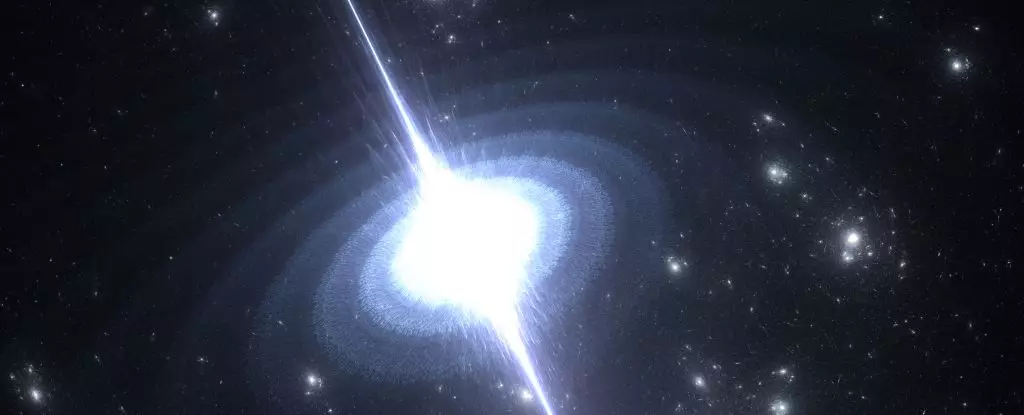The universe holds countless mysteries, from the nature of dark matter to the fundamental building blocks of matter. Among these enigmas lies the hypothetical particle known as the axion, a candidate for dark matter that has intrigued physicists since its conception in the 1970s. Recent findings suggest that a unique subset of neutron stars—especially those with rapid spin—might offer a new avenue for detecting these elusive particles. In this article, we delve into the potential relationship between fast-spinning neutron stars and axion production, elucidating what such a discovery could mean for our understanding of the universe.
Axions were originally posited to resolve issues within quantum chromodynamics (QCD) and have since been hypothesized as candidates for dark matter. These elementary particles are theorized to have a weak interaction with other forms of matter, making their detection a formidable challenge. The scientific community’s search for axions has always been intricately tied to understanding the gravitational anomalies attributed to dark matter’s existence. If axions exist within a certain mass range, they could mimic the gravitational effects we associate with dark matter, thus contributing to a broader comprehension of cosmic dynamics.
What makes axions particularly enticing is their predicted decay process. Under adequate magnetic field conditions, axions are expected to transform into pairs of photons. This attribute implies that by identifying excess light radiating from specific locations in space, particularly near powerful magnetic fields, scientists could infer axion presence. The nature of neutron stars—with their extreme densities and magnetic fields—provides the perfect laboratory to explore these phenomena.
Neutron stars are born from the inevitable collapse of massive stars following supernova explosions. These celestial bodies exhibit extraordinary properties due to their intense gravitational fields and density, where a sugar-cube-sized amount of neutron star material would weigh approximately the same as all of humanity. The magnetic fields surrounding these stars are not only strong—often trillions of times more powerful than Earth’s—but they also exhibit dynamic behavior.
Pulsars, a specific type of neutron star, rotate at phenomenal speeds, creating beams of radiation that sweep across the cosmos like a lighthouse. The rapid spinning influences the neutron star’s magnetic field, potentially enhancing the conditions favorable for axion formation. However, despite extensive analysis of pulsars, previous searches failed to yield evidence of excess light, leading to a paradox: the absence of detectable axions does not necessarily imply they are nonexistent, but rather dictates stricter limits on their anticipated signals.
In a promising new study, researchers propose that axions may accumulate around pulsars, forming dense clouds due to the intense gravity exerted by these stellar remnants. According to their calculations, these axion clouds could exist near the surface of neutron stars across the cosmos, possessing densities vastly greater than that of typical dark matter. As these clouds form, it is posited that they might produce detectable signatures through leaking photons, providing the first tangible evidence for axion existence.
The nature of this potential signal remains speculative but intriguing. One possibility includes observing a narrow line in the radio spectrum, suggesting a frequency that correlates with the mass of the axions. A lack of such a signal could refine our understanding of possible axion masses. Another scenario predicts a luminous burst at the neutron star’s end-of-life stage, although astronomical timescales indicate we will not observe this phenomenon anytime soon. Thus, the continuous signal remains the more immediate focus for future research endeavors.
While the hunt for axions continues to pose significant challenges, recent research delineates a clear path forward. The constraints established regarding axion mass—derived from the non-detections of both axion clouds and excess light—illustrate not just the complexities of dark matter’s role in the cosmos but also the vast potential of neutron stars in advancing our comprehension of elusive particles.
Should future observations successfully unveil axions, our understanding of the universe may undergo a revolutionary transformation. As we stand on the frontier of cosmic exploration, the unique properties of neutron stars act as a beacon of hope, guiding us toward the answers to profound questions about matter, dark energy, and the fundamental workings of the universe. The quest continues, driven by curiosity and the universe’s lingering mysteries, promising a rich tapestry of discovery ahead.

